In Italy, a Wallcovering Renaissance
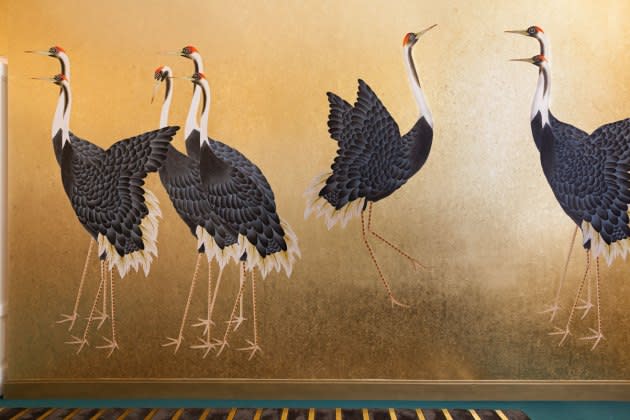
MILAN — Somewhere among the rice paddies of a small village in Northern China, dominotiers, or wallcovering artists, are the torch bearers of centuries-old, hand-weaving and painting techniques. Their elaborate wall creations will retrace the Silk Trade and adorn the walls of the visionary homes of Europe, the Middle East and America.
A practice said to have been born during the Qin dynasty, these artisans first used rice paper and then later linen fiber. Today, innovation in textiles and mounting materials have been developed to make their creations last even longer and their colors and hues shine even brighter. Wallpaper’s rise was, and still is today, driven by the economy, as well as a desire to create an escapist paradise in one’s home, rather than simply fill it with objects.
More from WWD
A luxury boom in billionaire-heavy capitals like Dubai and London is fueling an ongoing renaissance and demand for upscale wallpaper coverings employing various methods. The couture covering brands like Misha and Dedar that are gearing up for Design Week here see no signs of demand slowing in the near-term.
In and around the worlds of fashion and design, a surge of co-collaborations will be on display during the week, including a Marni tie-up with Italian firm LondonArt and Fornasetti, for example, will launch in May the new escapist “Senza Tempo Vol II” collection. This is a project with historic British house Cole & Son, founded in the blockprinting hub in North London in 1875.
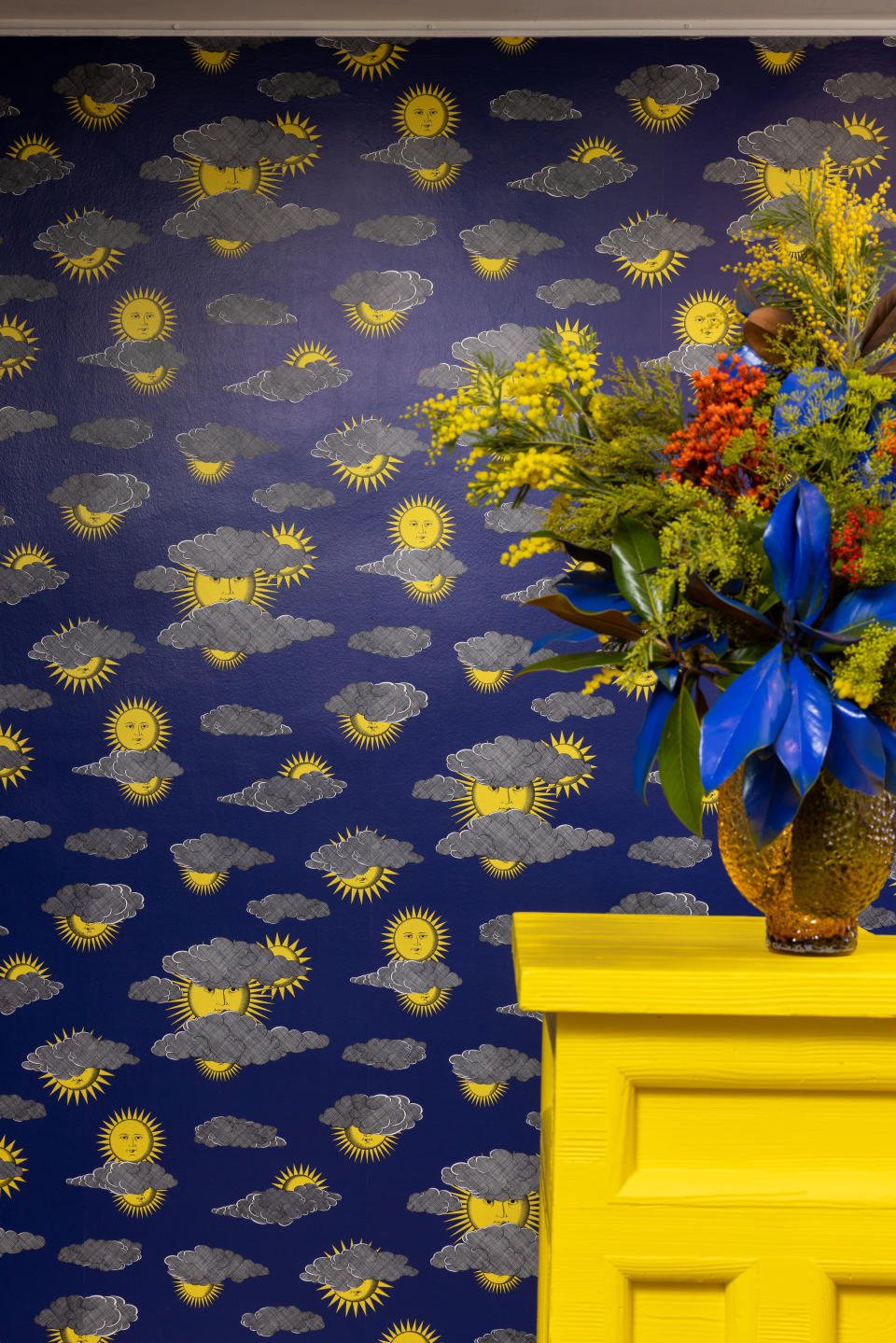
Milan-based firm Misha cofounder Chiara Enrico’s epiphany arrived while the world was still embracing minimalism, working as an interiors architect and living the expat life in Shanghai in the early Aughts. On a trip to Northern China, she stumbled upon a workshop that was perpetuating this long-cherished artisan practice of making decorative paper. Now based in Milan, she maximizes this network between the East and the West with her sister and cofounder Anna, an attorney. Firms like Misha, along with Fromental and de Gournay to name a few, are reviving this sort of Chinoiserie, which rose to the fore in Europe’s royal palaces and aristocratic estates between the 17th and 19th centuries.
“Our product really defies that generalization that Made in China isn’t luxury,” Chiara said in her office, which is covered floor to ceiling in a glorious “Cabana in Golden Sky” wallpaper, a natural and luxuriant wilderness whose petals are corniced by a delicately woven silk yarn. It is a Made in China masterpiece co-envisaged by Cristina Celestino, an architect and creative director who has worked with brands like Fendi Casa, Flexform, Fujifilm and Seletti, to name a few.
“Feel this,” Chiara said, showcasing a custom-made sample, fashioned to resemble the French royal crown and set with real stones — another, a Chinoiserie flower in full bloom whose veins have been hand stitched with silk thread and a multicolored bird, whose feathers have also been completely woven with shimmering silk thread. “It’s couture,” she mused.
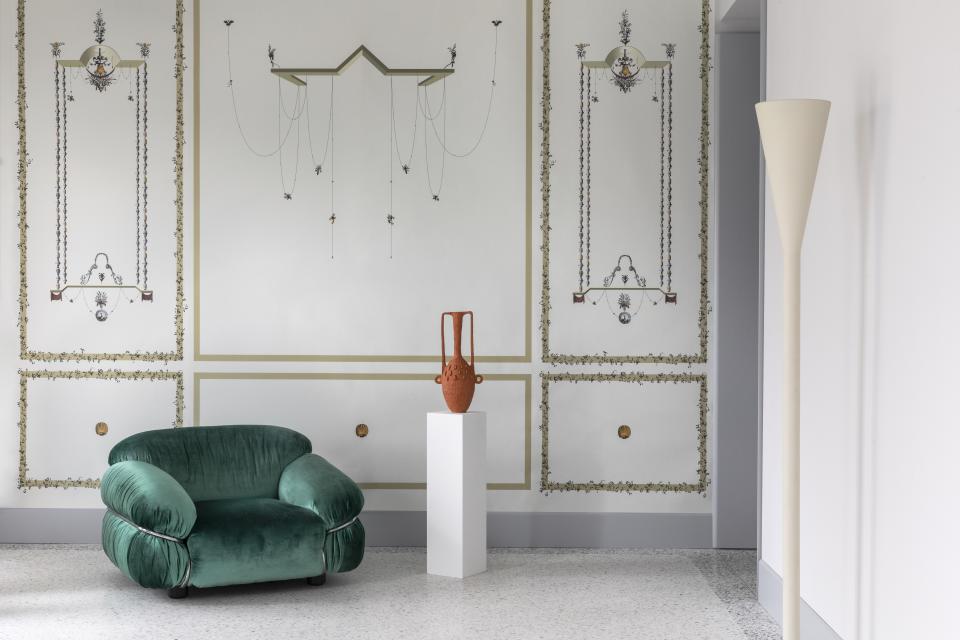
On Monday, Misha will unfurl its “New Pompei, The Villa of Mysteries” collection with Apulian designer Vito Nesta.
Misha’s monumental projects span the globe and with luxury brands like Pomellato and Dimore Studio. The Kempinski Hotel in Frankfurt, for example, is a shining example of a custom Chinoiserie wallcoverings collection from Misha. Entitled “Chinese Garden with Peacocks,” the design depicts a typical Chinese garden decorated with magnolia flowers, peonies and pheasants on a Japanese silk backdrop with metallic effect achieved with gold powder.
In terms of consumer price, Misha’s customized hand-painted creations from the top signature collections can run anywhere between 800 and 1,000 euros a square meter, while Misha does offer economical prices like 40 euros a square meter for a more subtle raffia print.
Fueled by the pursuit to create ambience in one’s home, Misha’s sales rose 15 percent in 2022 versus 2021 and doubled in the first three months of 2023 year-on-year. In addition to their sales agents in the U.S., Germany, Spain, China and the Middle East, social media, Chiara said, is helping them inspire a demographic among the 30 to 60 age group. “Millennials still have a budget issue.”
On the other side of town in the upscale Brera district, Dedar, which makes textile wallcoverings out of fabrics with non-woven backing that can be glued to the wall, is preparing for Design Week with wall coverings that conjure images of the beaches of the Normandy coast and their showroom is awash in rose and white stripes. Dedar, which imbues the worlds of Italian art and textiles, says this season’s Deauville Wall, Library Wall, Serenissima Wall and Millerighe Wall designs are digitally printed on linen and jute fabrics and come in wide and narrow stripe motifs, with sporty and nautical designs, to adorn walls with a lively yet uniform result, while freely exploring the color spectrum.
At Fabscarte’s atelier, Milan decorators and master artisans are employing techniques that trace their roots back to the days Leonardo Da Vinci called Milan his home. Among them, a “classic” technique of dusting and creating a “glaze” or plays of light and shadow on the paper and working with a variety of materials like plasters, metallic powders, coffee powder.
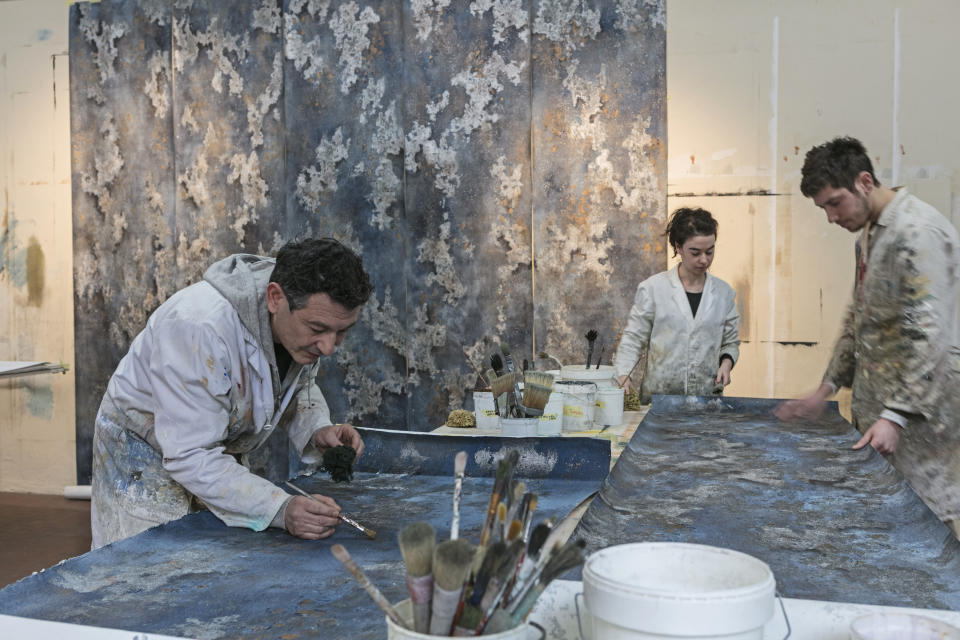
Fabscarte’s hand-painted Stardust Sunset collection will debut during Design Week at Milan’s revived Alcova industrial space. This second otherworldly collaboration between the artisanal wallpaper workshop and internationally renowned photographer and artist Martyn Thompson is an evolution of a relationship that began in 2017.
“The market has expanded significantly, but most of what we consider wallpapers are actually made of vinyl (not paper) and digitally printed. Technology has therefore allowed to speed up and simplify the production of wallpapers,” said cofounder Luigi Scarabelli. “Fabscarte is a rare example of artisanal excellence in which every step of the paper decoration process is executed by the skilled hands of decorators on paper support, just as it was done in classical time.”
Dedar’s co-owner and creative director Raffaele Fabrizio explained that as a result of world travels, he and his sister Caterina decided to segue into wall coverings in 2006. It was originally founded in the textile heartland of Como in 1976 by Nicola Fabrizio, a manager in Italian furniture design industries, and his wife Elda, who was passionate about fabrics and carpets. A key moment for the new wallcovering business came in 2013 when the siblings embraced moiré (moiré libre), a noble fabric with a fluid almost marbled pattern on a cotton base.
“We realized, once applied on the wall, that we could transform it by bringing it into a contemporary taste, thanks to the free, hand-crafted pattern, which is reminiscent of the large-scale, random veins of marble, unique and unrepeatable like our fabric, which is handcrafted and different from meter to meter. This textile wallcovering is 10 years old this year and we are relaunching it during Design Week with a new color sensibility,” Fabrizio said.
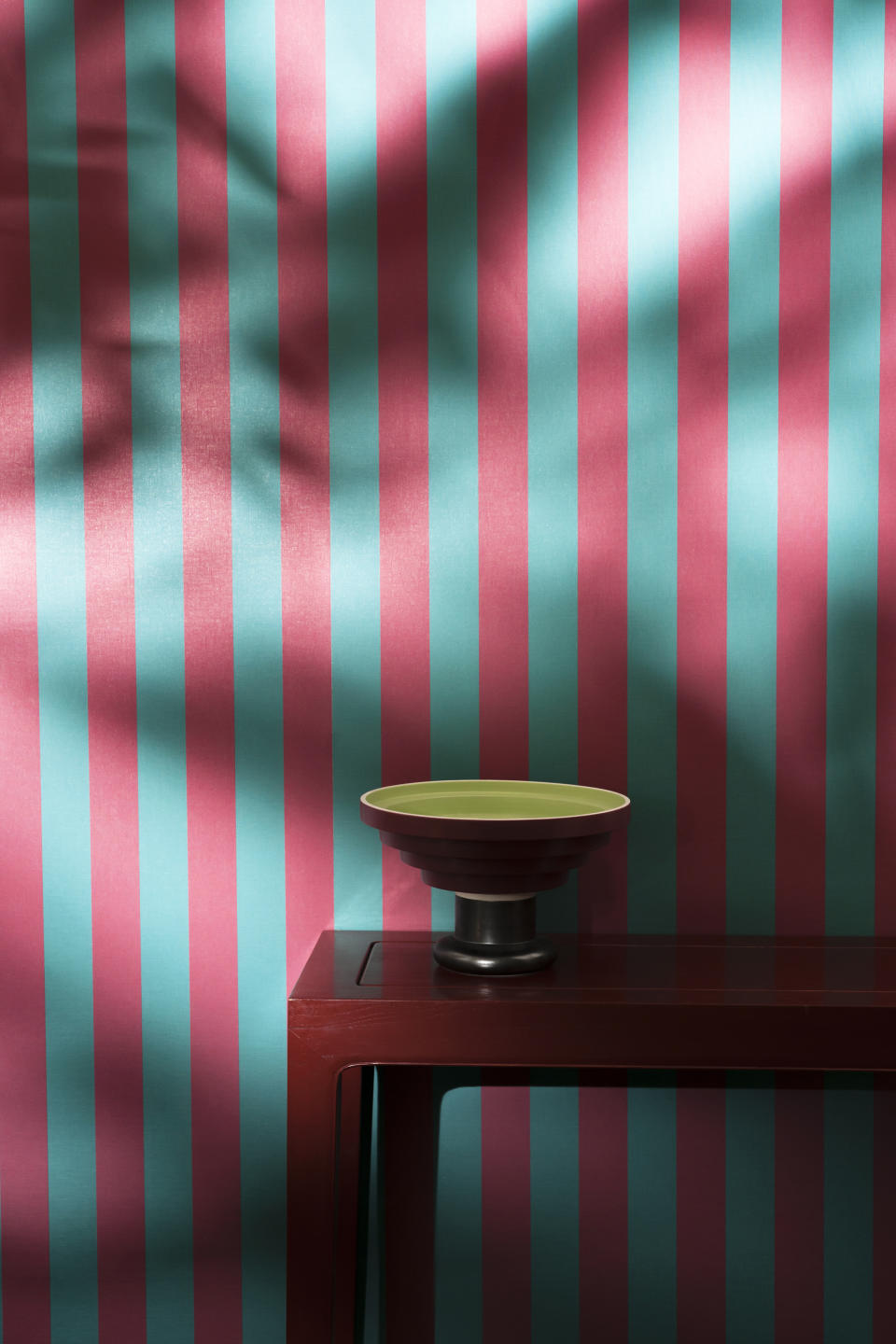
Fabrizio explained that this Golden Age of wallcovering is the modern version of the wall drawing tradition and has exploded in the last 10 years helped by digital printing.
“Textile wallcovering, on the other hand, derives from the classic stretched wall fabric tradition of grand palaces, which is made of textile material: warm, vibrant, irregular and which today is experienced as a way to give preciousness, warmth and comfort, even acoustic, to the interiors regardless of the pattern,” he explained.
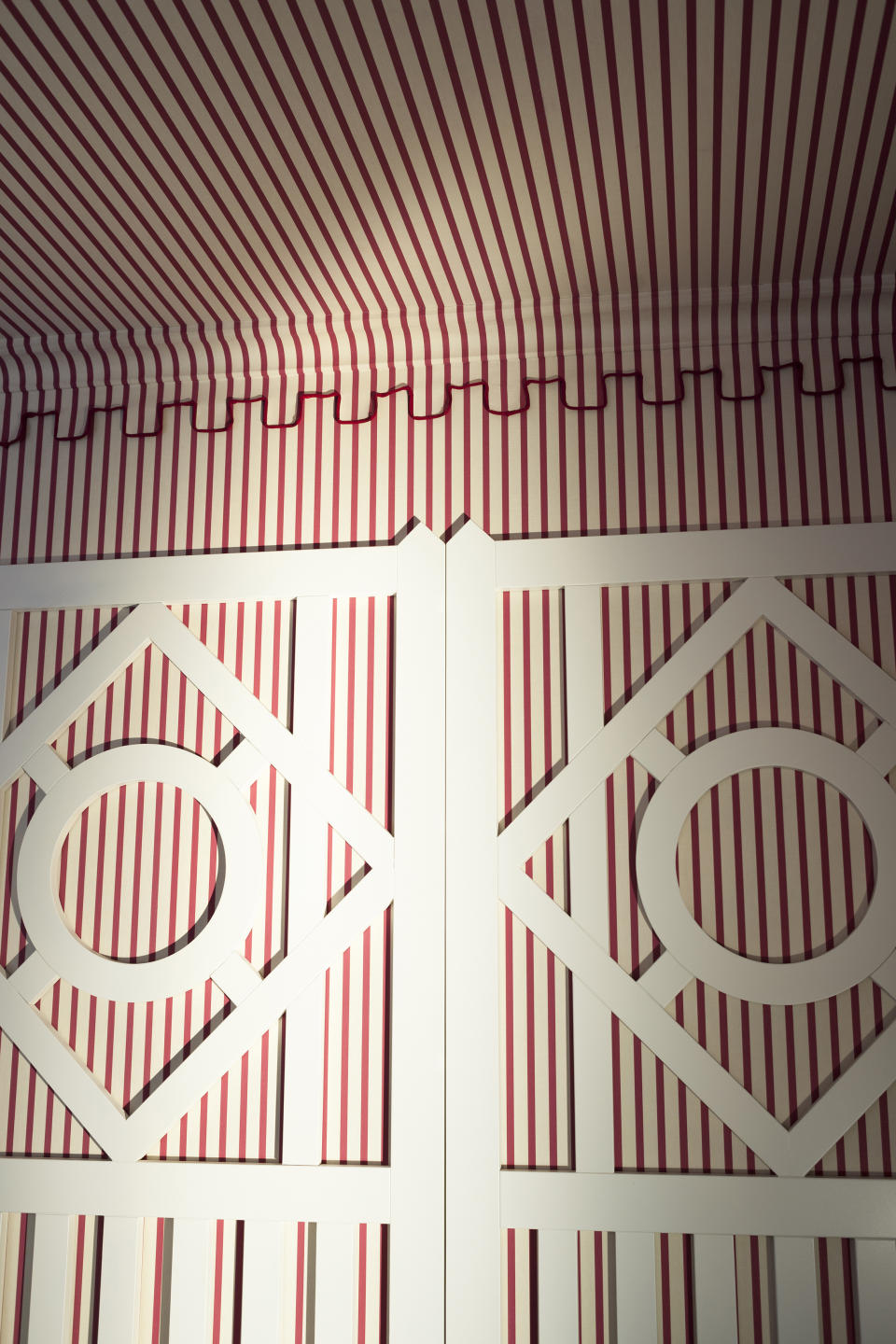
Since its inception, Dedar has inked hotel projects like the JK Place Rome by Michele Bonan, as well as fashion collaborations with houses like Hermès and Borsalino, contributing to its profile.
“I think the fashion brands find in us the contemporary interpreters of Italian textile design culture. They appreciate the fact that we conceive textiles both as a product of use, and therefore an object of design, and as a vehicle of emotion and wonder,” he added.
Best of WWD

